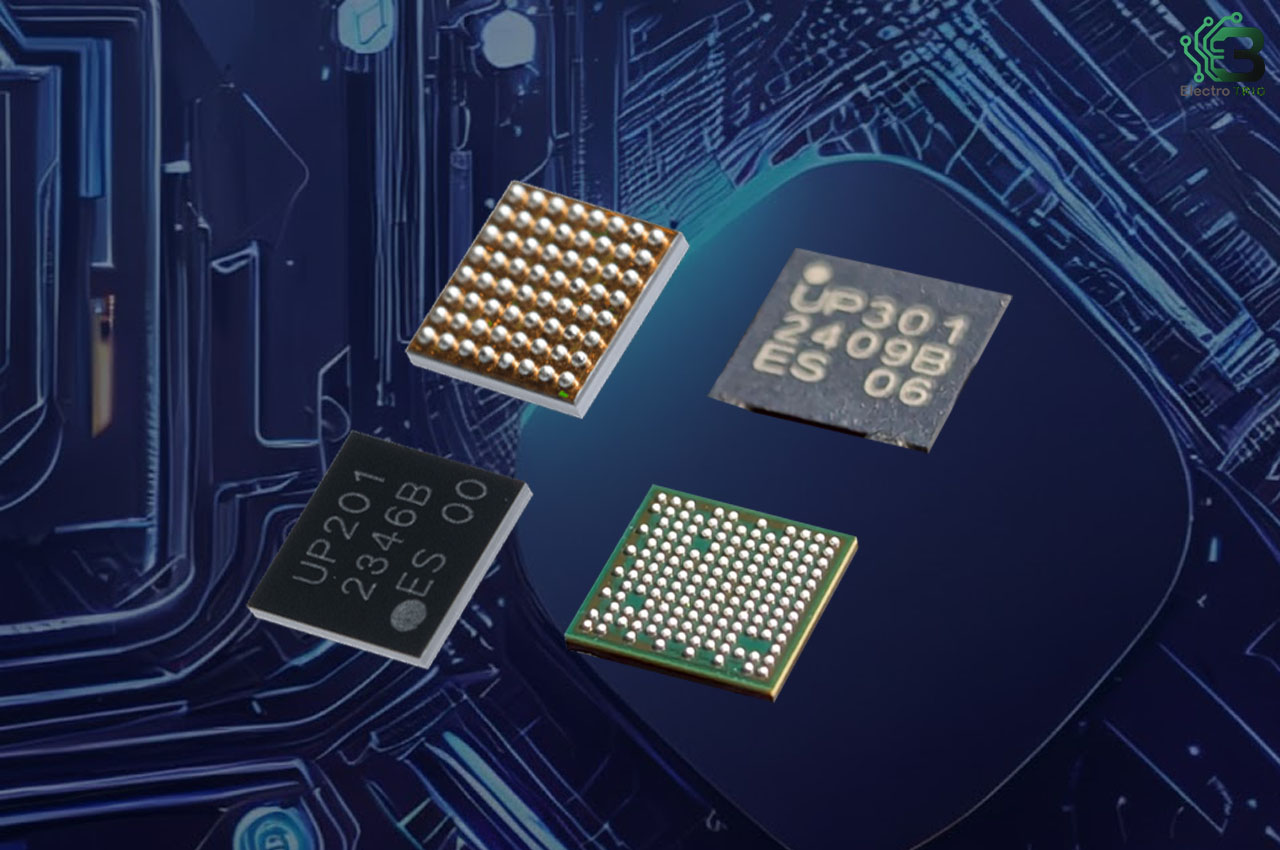In the age of the Internet of Things (IoT), where edge devices demand smart on-board intelligence, ultra-low power consumption, and robust security, Upbeat Technology has introduced its dual-core RISC-V SoC series, UP201 and UP301, designed to deliver energy-efficient Edge AI performance in real time.
At the heart of the platform is a heterogeneous dual-core architecture: a lightweight “always-on” E21 core (in the Always-On domain) continuously monitors sensors at minimal power, while a more powerful E34 core (in the Non-AON domain) switches in only when a heavier AI task is detected. This design enables major energy savings by dynamically switching power domains. The company claims power savings in the range of 32 % to 65 % compared to competitors.
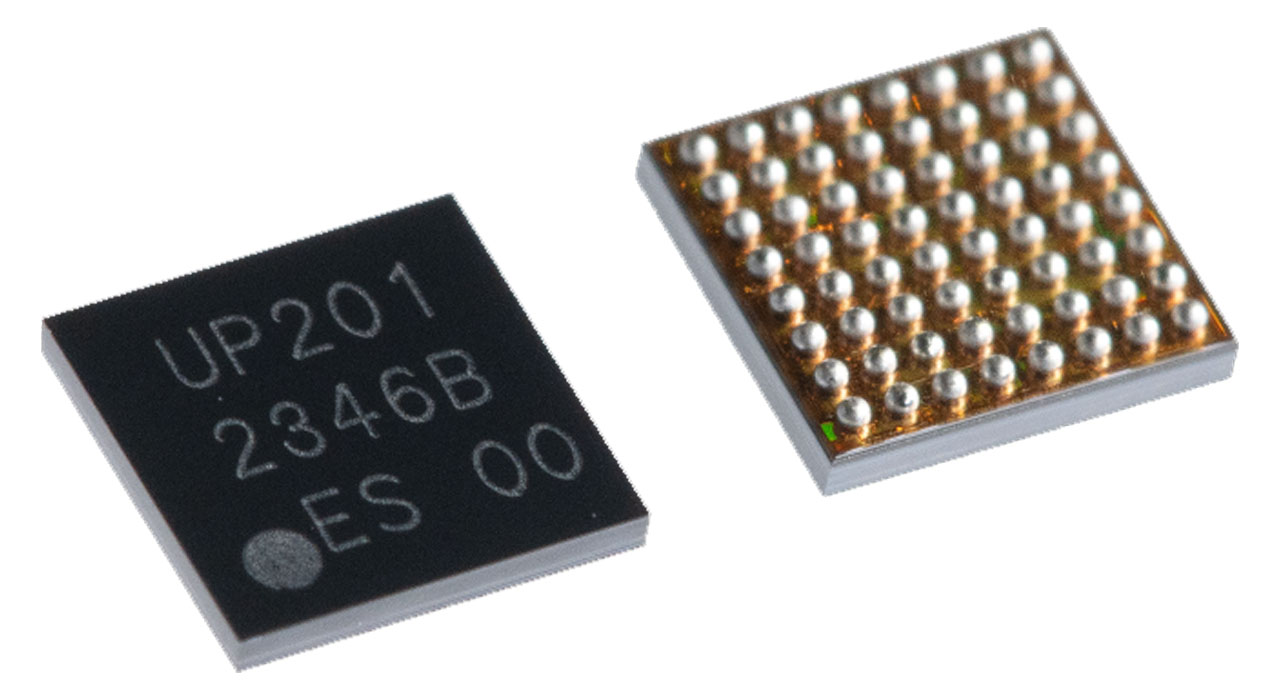
For AI acceleration, the UP201/UP301 integrate dedicated hardware: two CNN accelerators (NPUs) plus a 32-bit Integer Math Accelerator. The first NPU (in the Always-On domain) handles tasks like voice activity detection (VAD) or gesture recognition with very low power; the second NPU tackles heavier tasks like speaker-ID or physiological signal analysis (ECG/PPG). On the security front, the platform provides enterprise-grade features including a root-of-trust via a Physically Unclonable Function (PUF), OTP storage, and hardware cryptography engines supporting AES256, SHA256, SM4, and secure boot.
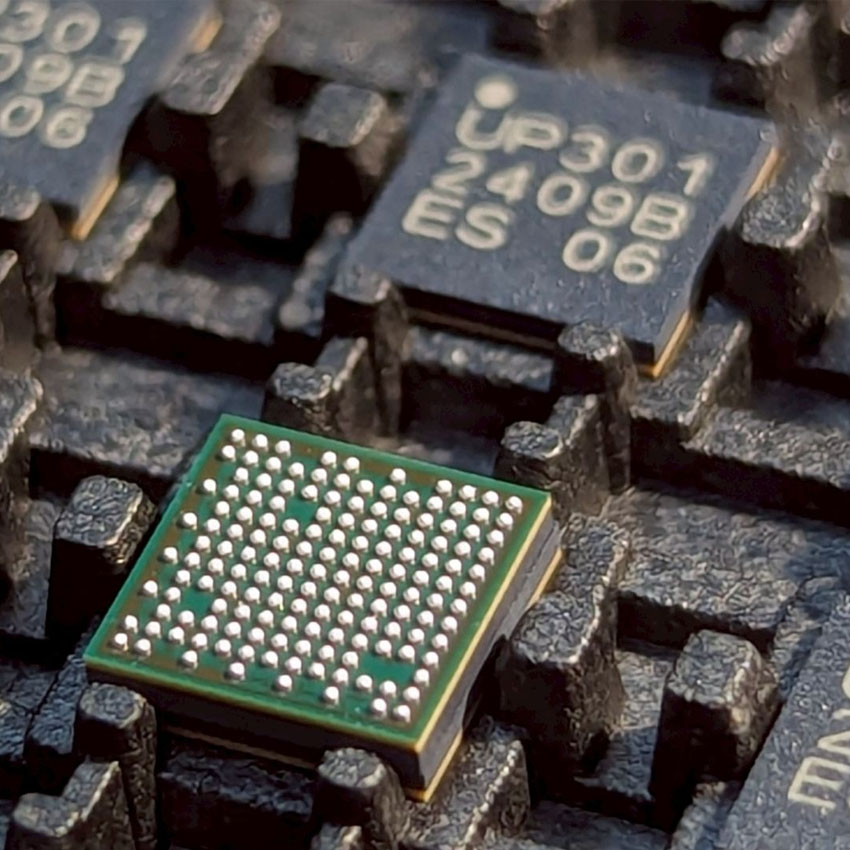
The two variants, UP201 and UP301, share the core architecture but differ in target use cases. UP201 is made to fit very small sizes of endurance battery-powered devices (3 mm WLCSP x 3 mm) with ultra-low footprint and can be used in wearables like smart watches or hearables. UP301 is able to support the richest peripherals, vision, and greater compute loads: 5 mm x 5 mm FCCSP, which puts it more appropriately in higher-end applications such as AR glasses, battery-operated robotics, or industrial AI.
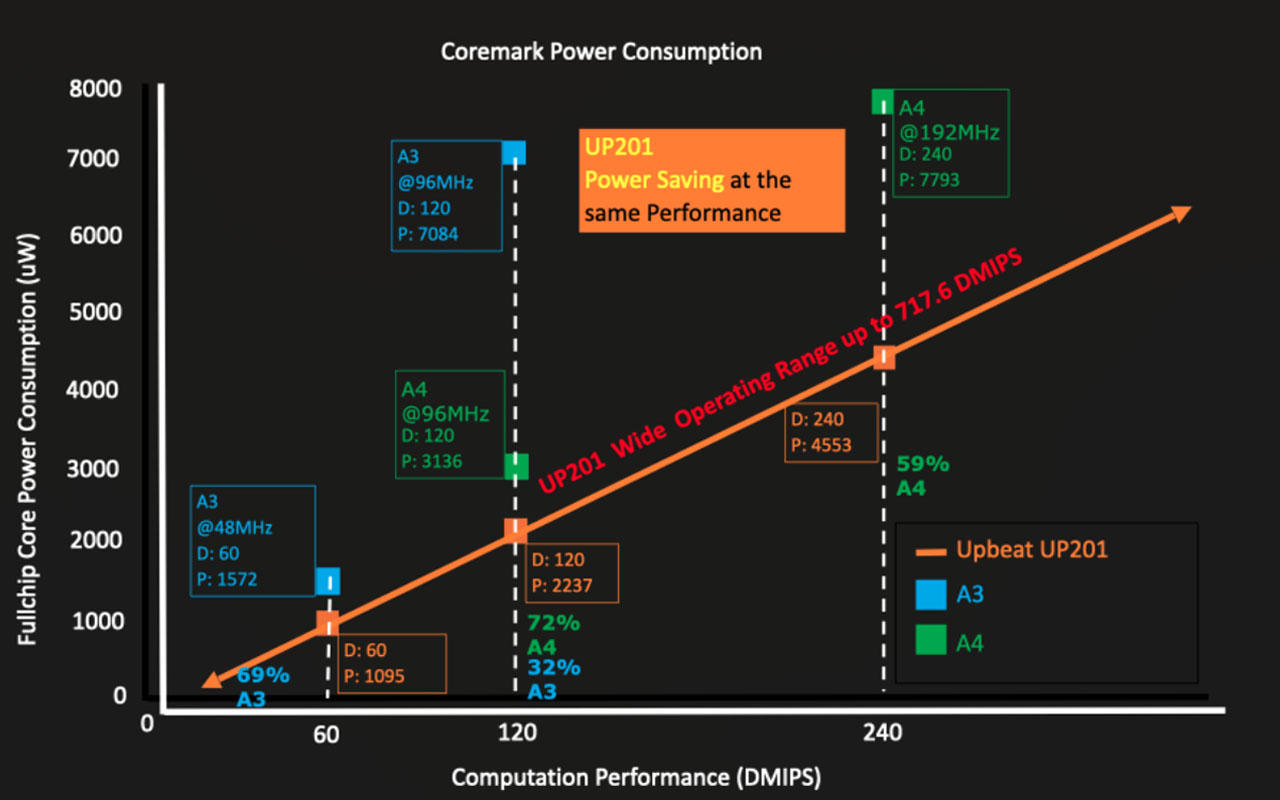
UP201 and UP301 Comparison Table:
| Feature | UP201 (Ultra Low Power AI SoC) | UP301 (Advanced Edge AI Processor) |
|---|---|---|
| Product Positioning | Extremely small footprint AI SoC Suitable for space-constrained and long-endurance devices Can serve as a Sensor Hub for smartwatches | High-level integration AI Processor Suitable for complex display and multi-sensor applications Can serve as the main controller for smart bands, supporting voice and multiple applications |
| Size and Package | 3mm x 3mm WLCSP, 64 balls | 5mm x 5mm FCCSP, 152 balls |
| Display and Vision | GFX 2.5D GPU Supports SPI (DBI-C) | GFX 2.5D GPU Supports 2-lane MIPI-DSI-2 and QSPI |
| Image/Camera Input | Does not support dedicated camera input | Supports 8-bit parallel camera input |
| External Storage Interface | Quad SPI Flash interface | Octal SPI Flash interface Built-in SDIO 3.0 / eMMC 4.5.1 support |
| GPIO/Peripheral Count | Max 29x GPIO 3x SPI Masters 3x UART 10x I2C | Max 100x GPIO 6x SPI Masters 5x UART 12x I2C |
| Typical Applications | Smartwatches, hearing aids (hearables), ultra-small IoT sensor nodes | Smart glasses (AR Glass), battery-powered robotic control, high-end industrial AI applications |
The Upbeat SoC series offers solid software support with an SDK based on the RISC-V architecture, providing compiler tools, drivers, and firmware libraries for quick edge AI development. It supports FreeRTOS, TensorFlow Lite Micro, and Upbeat’s own AI framework for efficient neural network deployment across dual NPUs. Developers can easily manage sensors, optimise power, and integrate edge AI functions like voice or gesture recognition with minimal effort, making it ideal for low-power IoT and wearable applications.
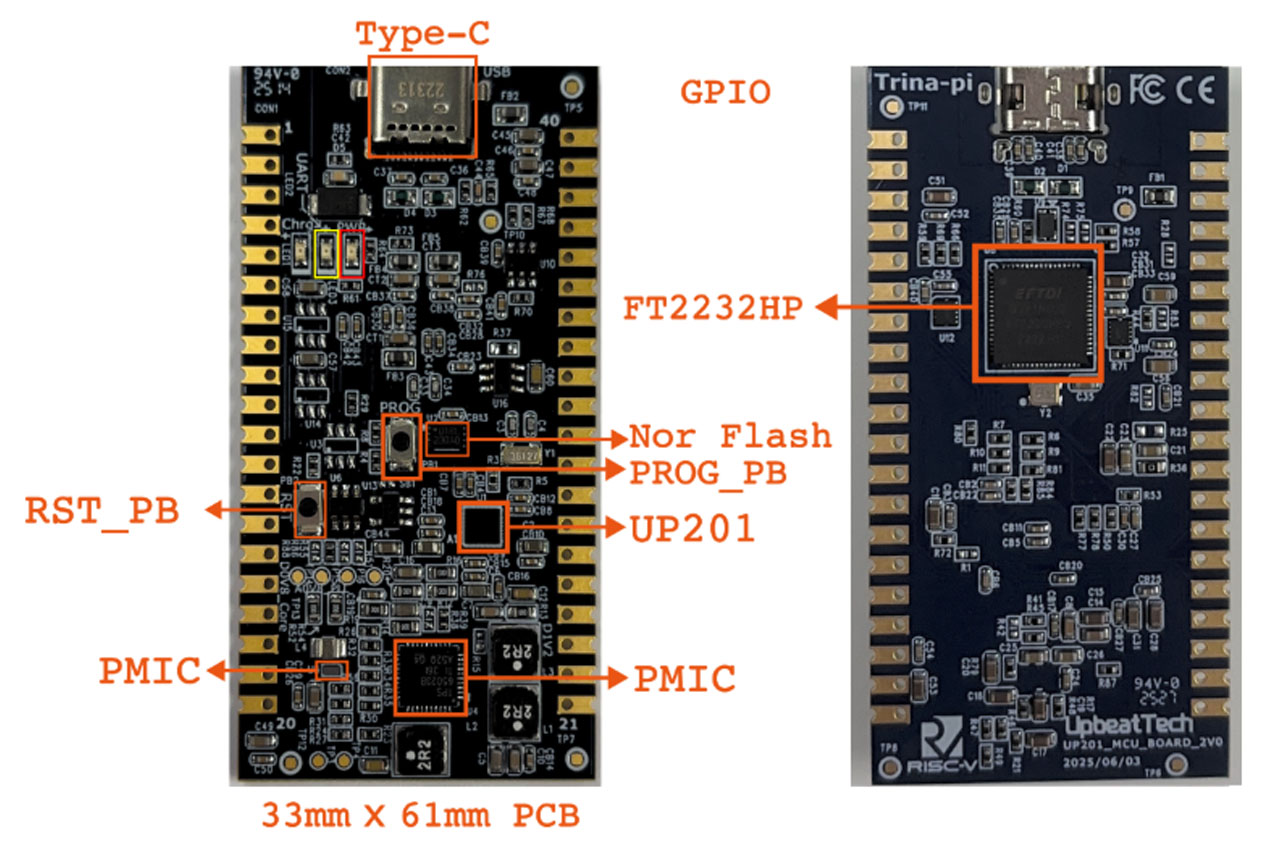
Also, the company launched the UP201 MCU Board: Trina-Pi is a small development board that is constructed based on the UP201 SoC by Upbeat Technology, a low-power edge AI and IoT development board. It has a dual-core RISC-V processor and built-in NPUs, which allow it to effectively execute on-board AI functions such as sensor data processing, voice recognition, or gesture recognition. The board provides the necessary interfaces that include GPS interface, I2C, SPI and UART, among others, thus connection with different sensors and peripherals is easy. Trina-Pi supports FreeRTOS, TensorFlow Lite Micro, and the AI SDK provided by Upbeat to enable developers to create and deploy energy-efficient AI applications within a short period. Its non-voluminous size and solid performance make it suitable for wearable technology, smart home devices, and battery-powered edge systems.
Price and Availability:
As of writing, the Upbeat Technology UP201 and UP301 SoCs are not currently sold on the retail front since they are projected to be production-ready later in 2025. Nevertheless, early access and testing of engineering samples and the software development kit (SDK) are already available. The UP201 MCU Board: Trina-Pi, which serves as a development platform for the UP201 SoC, is listed on Upbeat Technology’s official website with a “Buy Now” option, though no public pricing details have been disclosed. Interested developers and companies can contact Upbeat Technology directly for pricing, availability, and bulk order information.
